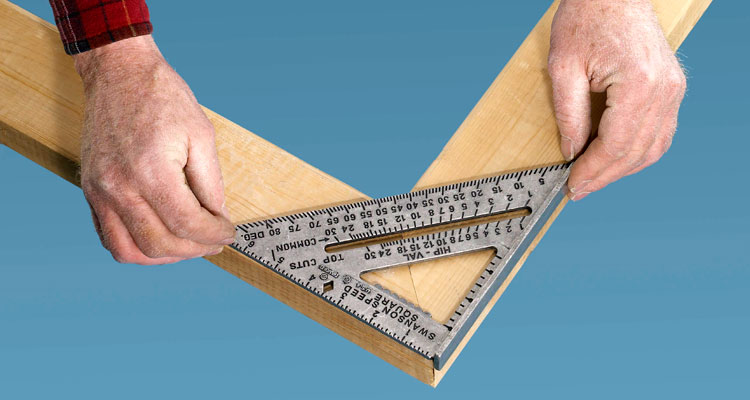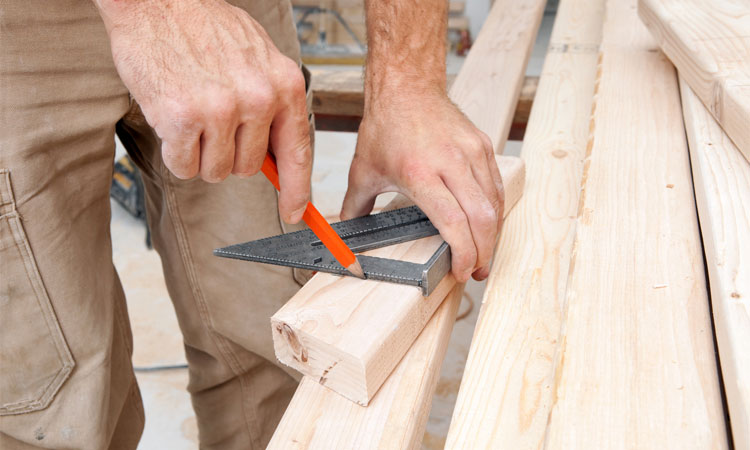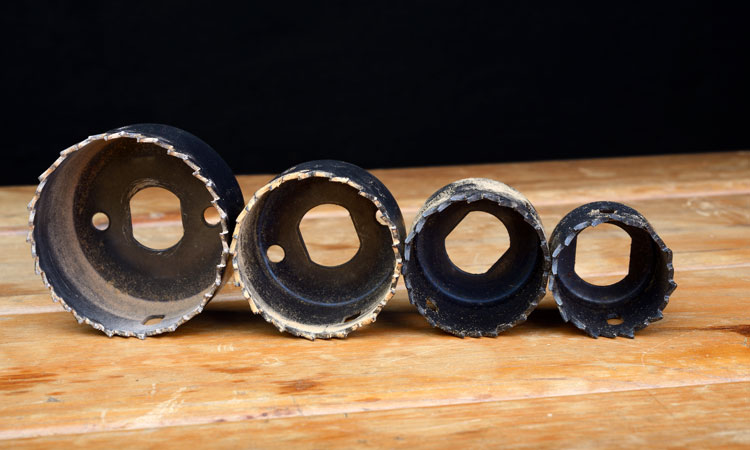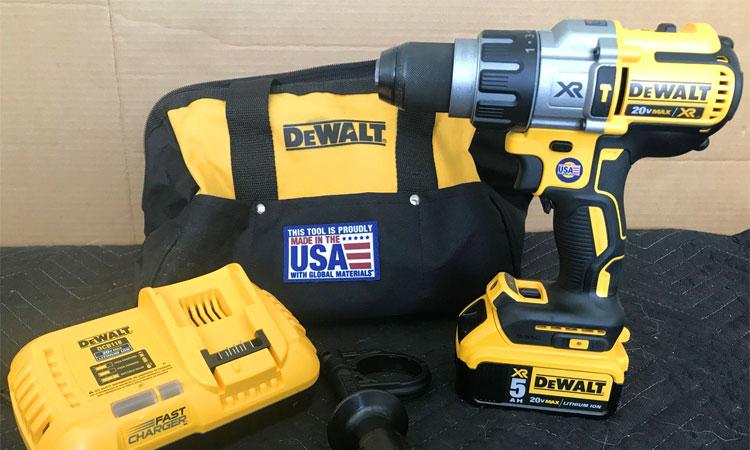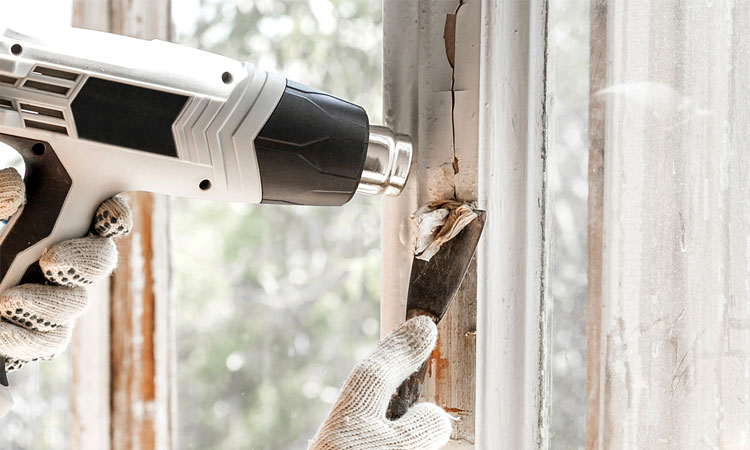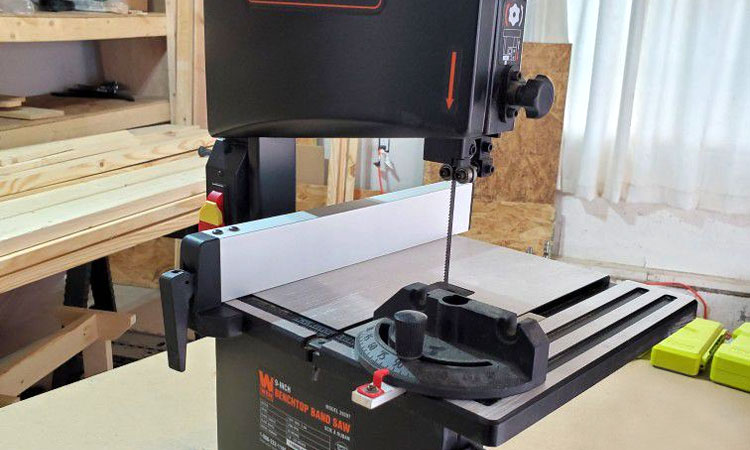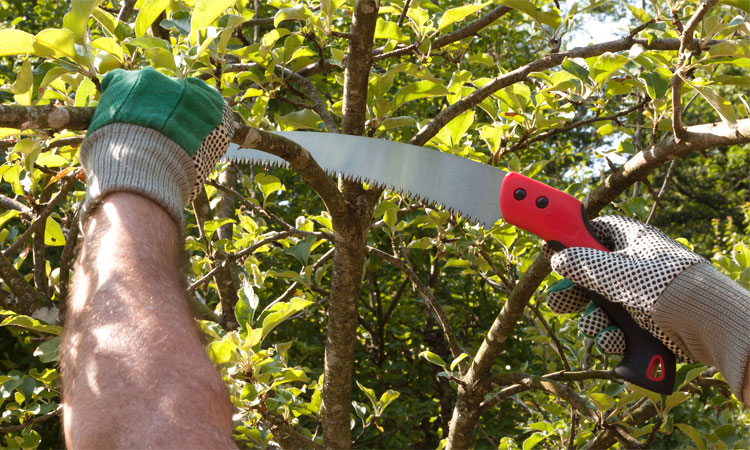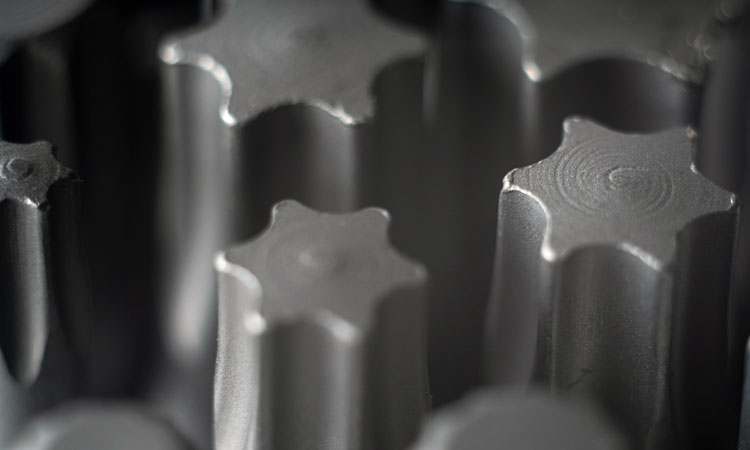7 Best Speed Squares for Framing and Woodworking
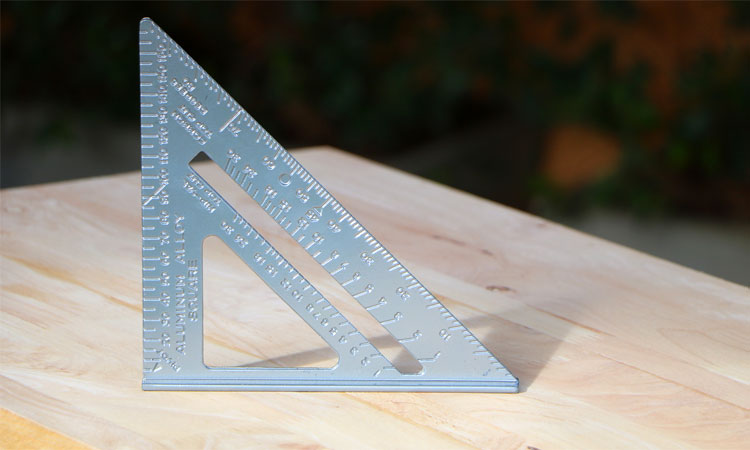
A speed square is a multi-purpose triangular carpenters’ tool used for marking out of square corners and do accurate measurements. It’s also known as a rafter square, rafter angle square, or triangle square.
Often considered to be the single most valuable measuring tool in carpentry and construction, speed squares not only allow for perfect 45 and 90 degree angles, they can also serve as a ruler and even a crosscut fence for your saw or router.
Due to their portability and versatility, having the best speed square possible is a must. Here are our top seven recommendations for this amazing tool.
Our 7 Favorites
| Product | Ruler Size | Material | Markings | Weight | |
|---|---|---|---|---|---|
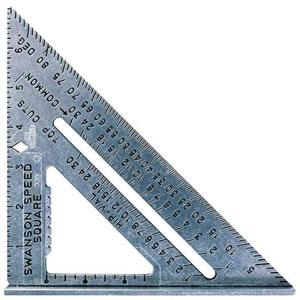 | Swanson S0101 | 7-inch | Aluminum | Etched | 8 oz |
 | Empire e2994 | 7-inch | Aluminum | Etched | 9 oz |
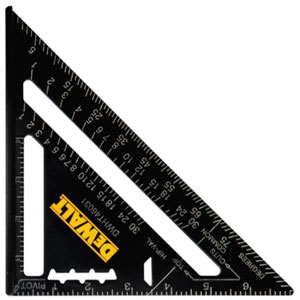 | DeWalt DWHT46031 | 7-inch | Aluminum | Painted | 8 oz |
 | Irwin Tools 1794463 | 7-inch | Aluminum | Painted | 6 oz |
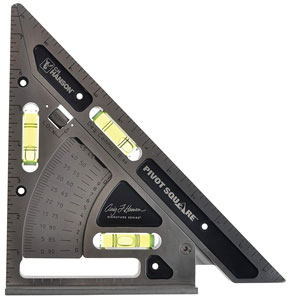 | CH Hanson Pivot Square | 9-inch | Aluminum | Etched | 7 oz |
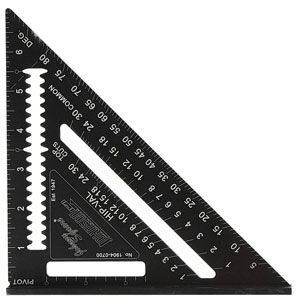 | Johnson Level Johnny Square | 7-inch | Aluminum | Etched | 5 oz |
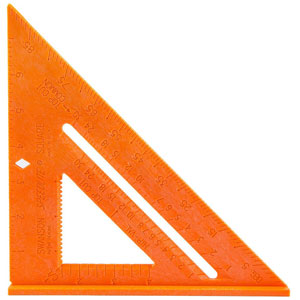 | Swason Speedlite Square | 8-inch | Polystyrene | Etched | 3 oz |
Speed Square Reviews
#1 – Swanson S0101 7-Inch (w/ Blue Book)
Made in the USA and inexpensive are reasons enough why Swanson speed squares are so popular. This 7-inch mini speed square (a 12-inch version is also available) has plenty of features to ensure it becomes a permanent addition to your tool belt or job apron.
The square has common rafter and hip/valley rafter scales for better angle cuts or square cuts with one-number references, as well as a slot for 1/4 inch adjustable locking pin. A 62-page illustrated pocket reference book is included to help woodworkers make the correct angle cuts and to aid in building rafters, roofs, and stairs.
1/4 inch scribing notches and high visibility black gradations make this tool perfect for roofers while remaining useful for a wide range of other measuring tasks.
Swanson’s speed squares have been American-made exclusively for nearly a century now, and that consistency shows in their quality. Whether it’s the 7-inch or larger 12-inch version, owners are thankful for the sturdy aluminum construction and easy-to-read markings. Always look for the diamond cutout for genuine products of Swanson Tool Co.
The included Swanson Blue Book that will help you make accurate angle cuts is a welcome bonus to an already valuable tool and is one of the best around.
Every once in a while, a square will slip through QC with die casting flaws. This isn’t common, but it can affect measurements or readability in extreme cases. Also be warned that online ordering of tools always carries a chance of receiving a refurbished item, so always aim to purchase from a reputable merchant.
>> Check current price <<
#2 – Empire e2994 True Blue 7-Inch Rafter
This 7-inch aluminum speed square features high-visibility laser-etched markings to ensure superior readability in low light or after heavy abuse. Its durable anodized aluminum construction makes it resistant to rust and corrosion.
The SCRIBE-GUIDE precision notches make it easy to mark parallel lines, while the 15 percent wider heel width provides greater stability. Finally, the speed square includes common conversion tables and a link to the digital manual.
The user guide has quite a bit of good information on getting the most from this woodworking square. Owners find the blue color easy to locate and the high contrast markings for easy reading, while the edge is nice and straight for accurate lines. A larger 12-inch version is also available.
The only real downside to the e2994 is the lack of notches for anchoring to your circular saw or other power tool. A few consumers have expressed regret over the need to print the user manual if they want a physical copy.
>> Check current price <<
#3 – DeWalt DWHT46031 7-Inch

Scribe line notches assist in marking rip cuts, and the stamped-in contrasting color gradations ensure easy readability.
When you need a speed square that will handle accidents, the DWHT46031 should be your first and last stop. Owners have suggested you could drop this thing from tall buildings, run over it, and it would still be as good as new.
While we’re not certain just how accurate these claims are, anyone who’s used this carpenter’s triangle can believe at least some of the stories.
The etched color feels more like they’ve been painted than etched to some users, and a few have reported scratches from shipping or use. The color also means this tool can soak up a lot of heat in sunlight, so be sure to keep it shaded.
A few users have also noted that the edges of this particular speed square can be rough on pencils.
>> Check current price <<
#4 – Irwin Tools 1794463 7-Inch Rafter
Sporting a blue aluminum body with permanent deep yellow stamped markings, this 7-inch wonder is rust-proof, weather resistant, easy to read and premium quality speed square.
The ruler includes 1/8, 1/10, 1/12, and 1/16 inch scales as well as rafter tables, brace and octagon scales, and Essex board measure on the hypotenuse. The sturdy construction is perfect for when you need a miter to cut angles reliably.
The high contrast markings make measurements both accurate and easy to read, much like many other speed squares. Many users reported the speed square feels more like steel than aluminum and is incredibly durable.
The included rafter layout guide is also a welcome addition for many consumers.
It should be noted that some sellers offer other colors, including a bare aluminum model. These variations have also been known to have poor paint jobs, resulting in chips that make markings harder to read.
Be sure to check with any seller to ensure you’re getting the right one to avoid potential issues.
>> Check current price <<
#5 – CH Hanson 03060 Pivot

A locking mechanism allows you to set a specific angle so you can mark multiple cut lines in either degree or roof pitches. Three UV-resistant spirit levels add improved accuracy when determining roof pitch, grades, and other leveling tasks.
Made of machined aluminum alloy, the 03060 is also an excellent choice for miter and plumbing cuts.
One of the most durable rafter squares on this list, the 03060 comes with a sturdy pouch, marking pencil, and an excellent technical guide on roof framing. The manual stands up to almost as much abuse as the square, and some owners have reported still being able to use the manual after years of spills and neglect.
As this tool is made to expand upon the angle functions of a speed square, the degrees can be paired against those of a protractor or digital clinometer with incredible accuracy.
Unfortunately, the locking mechanism doesn’t hold well for everyone, and some consumers have reported it coming out of alignment when knocked. Also, the spirit vials are prone to the same flaws as any spirit level, especially the rare but frustrating change of an over- or under-filled tube.
>> Check current price <<
#6 – Johnson Level & Tool 1904-0700
Swanson may have invented the speed square, but Johnson reinvented it. The extruded aluminum body on this seven inch rafter square has CNC machined thick edge and laser etched graduation for superior readability and accuracy.
Johnson’s EX-Read finish diffracts light instead of reflecting it, creating an anti-glare coating that makes it equally easy to read in full sunlight or full shade while simultaneously creating more friction when used as a saw guide.
Scribing notches aid in ripping at either 3-1/2 or 5-1/2 inches and can measure two-by-four board dimensions of 1-1/2, 3, and 3-1/2 inches.
Owners of this tool truly appreciate the design efforts, especially the addition of five scribe slots instead of the usual three. Some versions are magnetic for even more control, and the markings are all easy to read.
The coating gives this tool a black appearance which can cause it to heat up when exposed to direct sunlight. Damaging the coating can also make the white markings harder to discern as the aluminum structure is exposed.
Also, while this tool is incredibly durable, a few customers have found the product can still be damaged on delivery (“Only a courier can break the unbreakable.” – Anonymous).
>> Check current price <<
#7 – Swason Tool T0118 Speedlite Square
When talking about speed squares, it’s only appropriate the conversation begins and ends with Swanson speed square. However, the speed square we’re finishing with breaks all the rules, and for good reason.
This particular speed square is an unusual eight inches and made of high impact polystyrene instead of metal. What gives?
Swanson created this plastic speed squares to be used on more delicate surfaces, such as glass, laminate, and siding. In fact, the eight-inch size is specifically intended for making cuts in eight-inch siding.
The beveled edge makes it easier to read, and the scribe line notches are spaces 1/8 inches apart. A center line guide aids in finding the center of round stock. You can even choose between a gentle matte grey or high visibility yellow or orange for the finish.
Despite the unusual choices, this speed square is still quite durable and the color options make it much easier to find. DIYers who’ve added the T0118 to their tool kit use it when a normal speed square is too rough on their materials.
A few manufacturing defects are more prone to occur with this tool due to the use of plastic instead of metal. This can include minor flaws in the edge and a little less chance of survival if dropped from extreme heights.
The markings can also be a little harder to read for some individuals than with high-contrast etched metal models.
>> Check current price <<
The Basics
Buying a speed square is an important step in any handyman’s life. These tools are used in all sorts of woodworking, although they’re best known for framing, roofing, and stair construction.
Here are a few common questions what will help when deciding on whether to invest in a speed square.
Speed vs Combination vs Framing Squares
These three common speed squares perform very similar tasks on the surface, but have unique specialties which make all three valuable additions to your workshop.
Combination squares combine a spirit level, ruler, and speed square into one convenient metal package. The head has fences at both 45 and 90 degree angles and can slide along the ruler blade, locking to ensure accurate marking lines. It’s used for laying out lines for crosscutting, notching, mitering, and ripping.
See Also: Best Combination Squares for Fast Precision
Framing squares are generally large L-shaped squares designed to check the squareness of large boards and sheet stock. Measurements adorn both the inside and outside edges, with ⅛, 1/10, 1/12, and 1/16 inch increments noted.
Speed squares can be used as saw guide, line scriber, protractor, finding roof pitch, framing square, stair layout, and other things. They are shaped in a right triangle and have a flange or foot that is used to butt up against the edge of your work piece.
Due to the shape, you can perform marks in 45 or 90 degree angles, layout angles from 0 to 90 degrees, and the solid construction allows you to use it as a fence when crosscutting.
While the straight non-flanged side serves as a regular ruler, the diagonal has special markings to aid in measuring roof pitch, stair angles, and laying out rafters.
What Size Should You Get?
Speed squares generally come in only two sizes – seven and twelve inch – making it much easier to choose. However, the two sizes have slightly different uses.
7-inch speed squares are small enough to carry in a tool belt or apron, and it also works well as a miter square for your circular or wet saw. The larger 12-inch speed square is more efficient at measuring two-by-eight or larger lumber, as well as laying out stairways or rafters.
You will thus want to choose the size which best suits your needs, heavy duty and has all the features that a speed square should have. Of course, owning one of each means you’ll always have what you need when you need it.
Related: Best Tape Measures for DIY and Professional Use
How to Use
Speed squares have a foot/lip/flange on one straight side which you can use to butt up against the material you’re measuring. The other straight side has a ruler with at least one set of markings.
A point at one end of the lip is known as the pivot and allows you to measure various angles. As for the hypotenuse (long end), you can find a wide array of markings, including degrees and other units important for roofing.
The flange is your best friend, allowing you to use the speed square as a miter or hold it firmly against a board. By holding the pivot point, you can turn the square to find the proper angle along the hypotenuse and mark that angle in mere seconds.
Using the flange, your speed square also becomes a miter at the corner of the hypotenuse and a try square at the 90 degree corner.
There are plenty of additional nuances to your speed square that are detailed in the manual included with your model, but these basic techniques are a great starting point.

